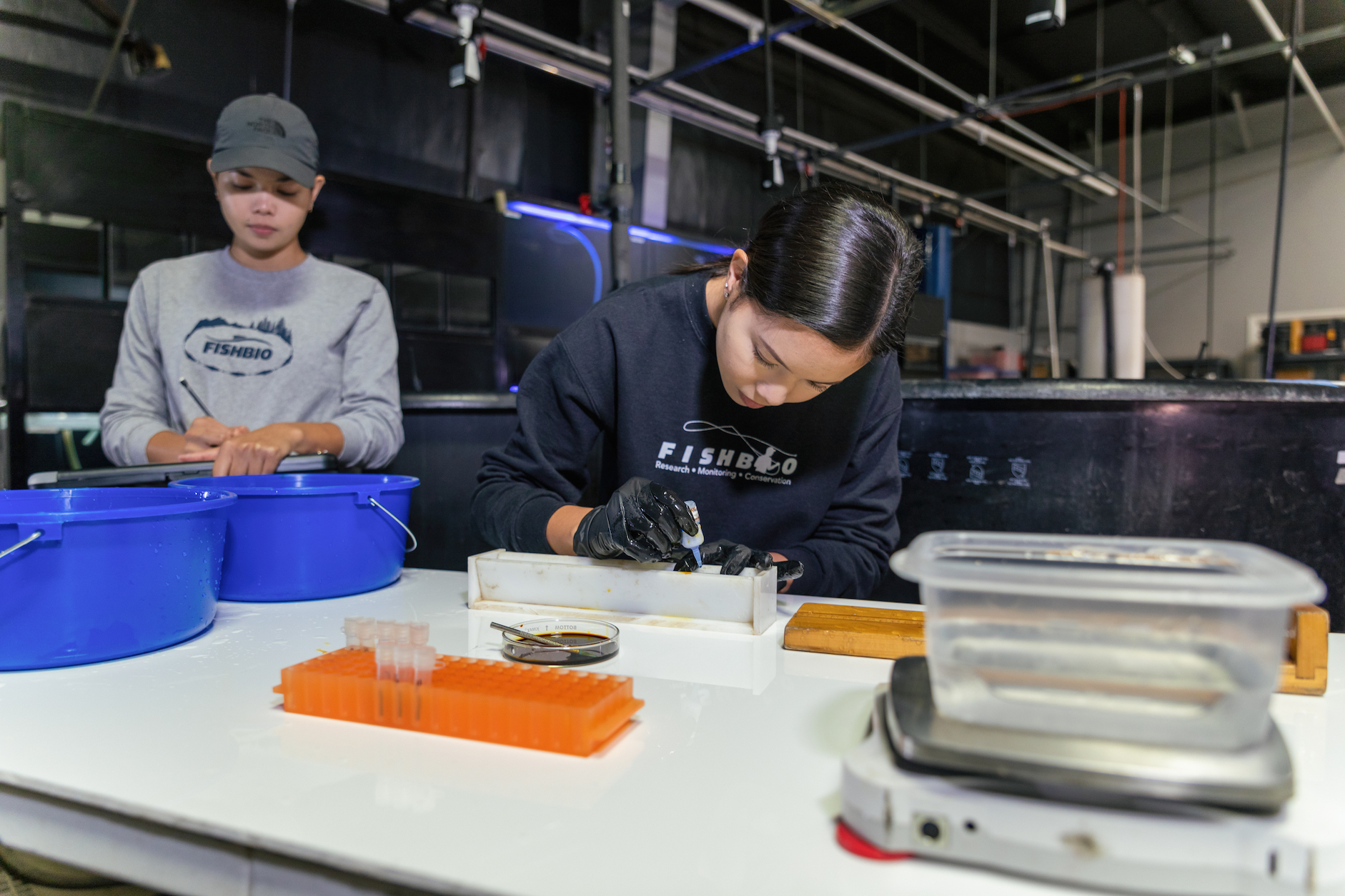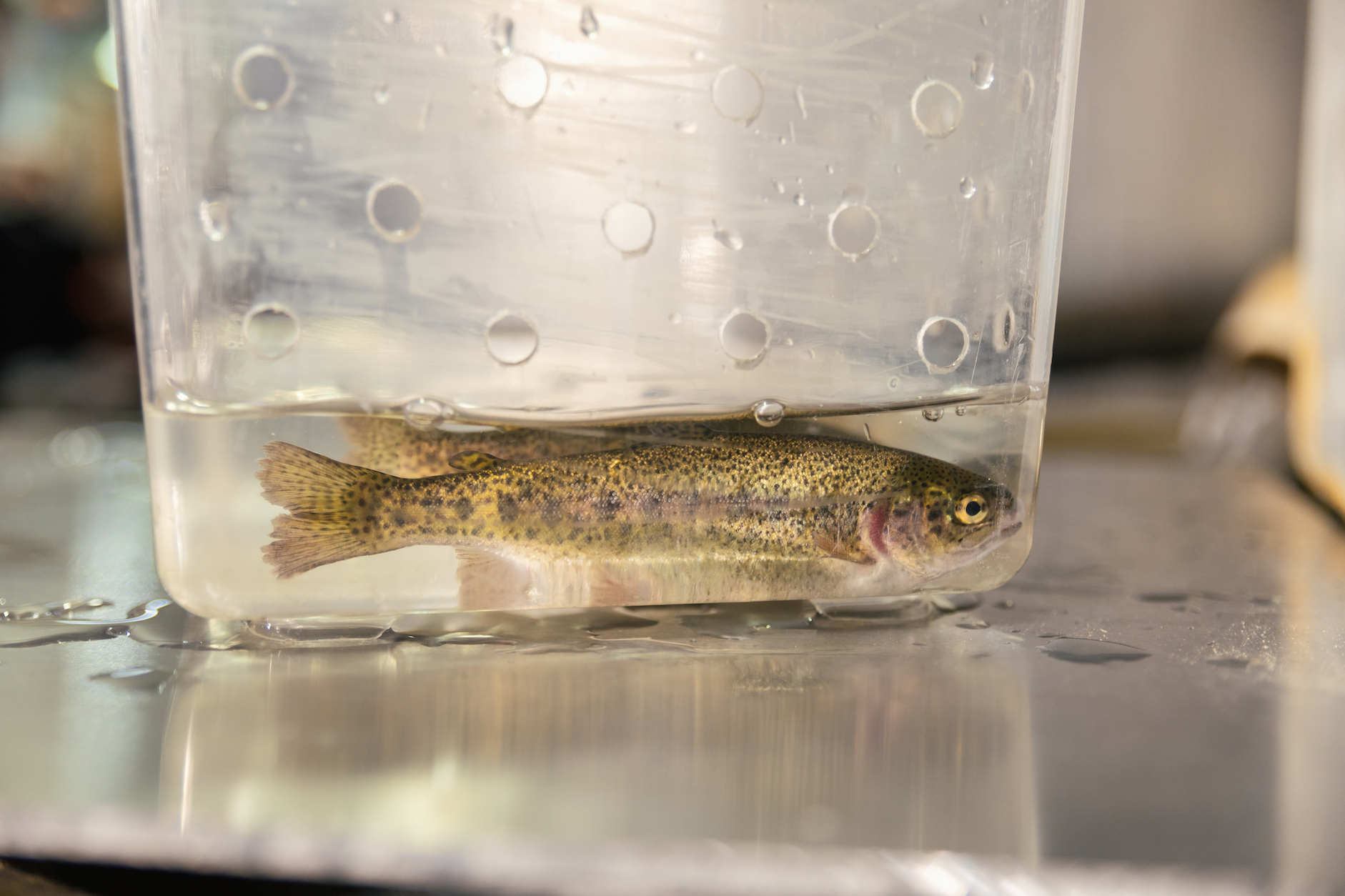

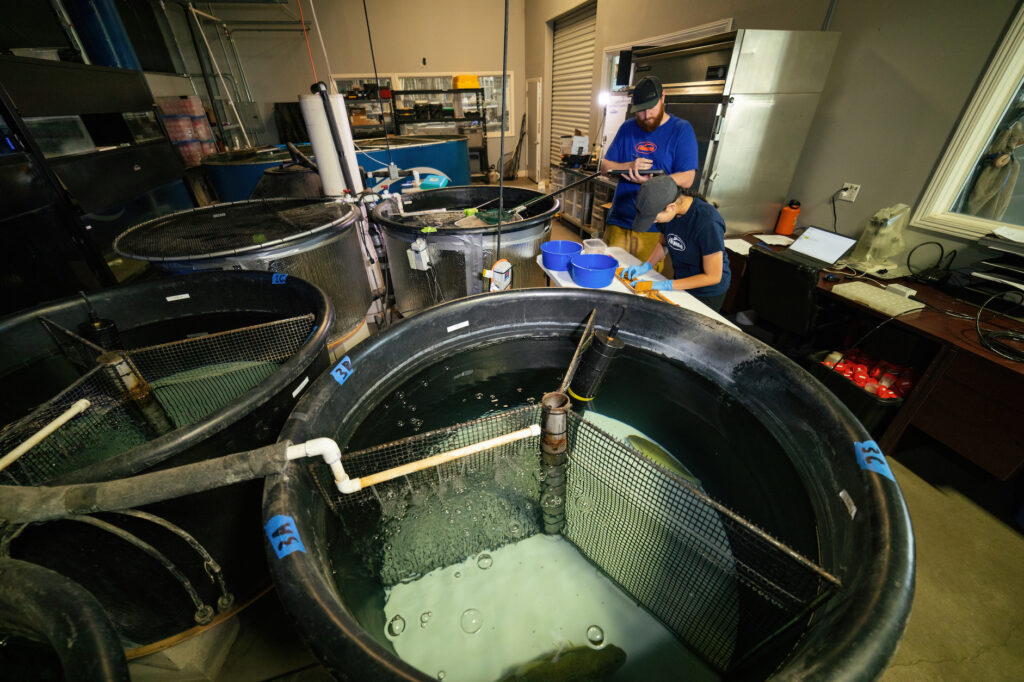
One of the greatest challenges scientists face when conducting acoustic telemetry studies of juvenile salmon survival is determining how much of the salmon mortality they observe is due to predation. To address this issue, advancements in acoustic tag technology seek to alert researchers when a tagged fish has been consumed by a predatory fish. Specifically, when degradable polymers in the tag’s specialized trigger are exposed to a predator’s stomach acid, they dissolve and cause the tag to switch the unique identification code it transmits. In 2021, FISHBIO collaborated with Innovasea Systems Inc. to design and perform laboratory experiments to test the newest version of their smallest predation transmitter, the V3D (Innovasea, Halifax, Canada). The study took place at FISHBIO’s Fish Lab facility and built on our previous evaluation of the Predation Detection Acoustic Tag.
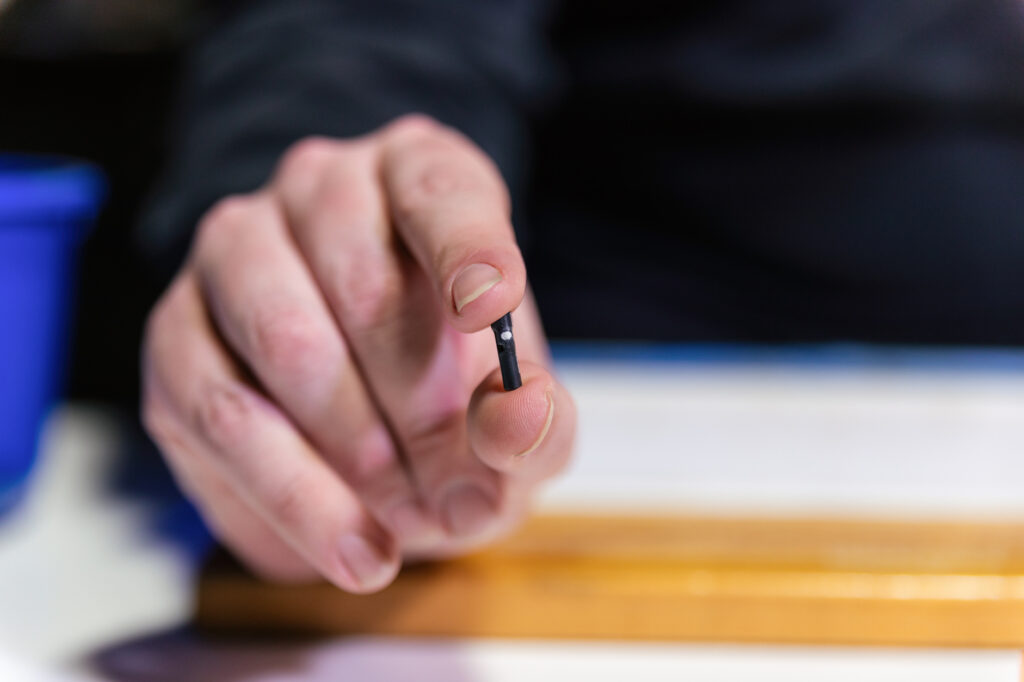
As part of the study, largemouth bass (Micropterus salmoides) were fed a single rainbow trout (Oncorhynchus mykiss) tagged with a V3D tag each week for six weeks. Feeding trials were conducted at two temperature regimes (18.5 oC and 23.5 oC) to better understand the effect of temperature on tag performance. Video monitoring of the tanks used in the experiment was used to document the time of each predation event and whether consumed tags were regurgitated or defecated. Simultaneously, Innovasea HR3 acoustic receivers were used to record when the consumed V3D transmitters switched their unique identification codes to indicate a predation event.
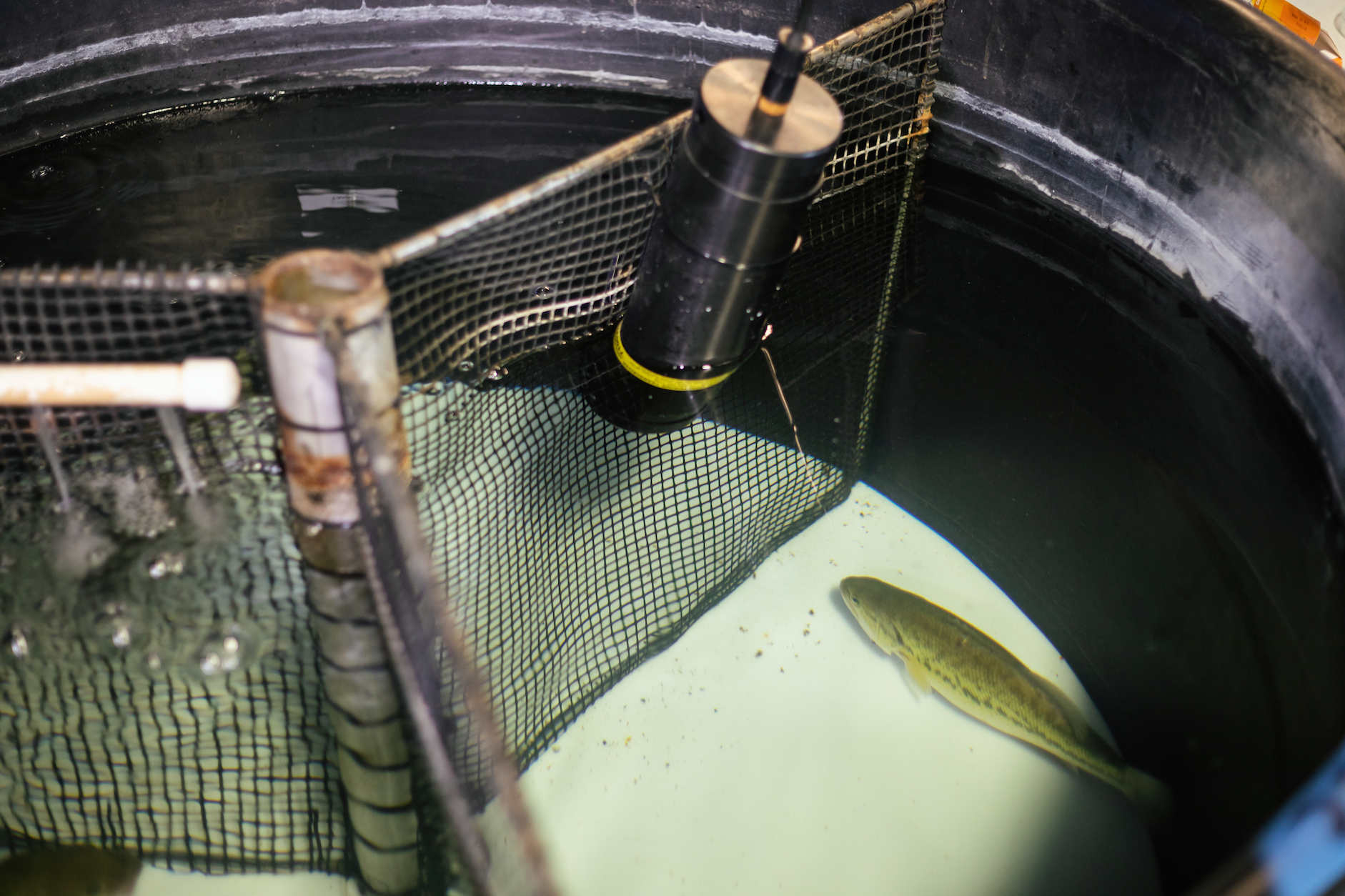
During the feeding trials, we observed that 100% (n = 48) of the tags successfully triggered, on average about 11 hours after consumption (range one to 27 hours). The tags activated faster in the warmer trials, with a median trigger time of 6 hours (compared to a median trigger time of 14 hours in the cooler trials), which was likely associated with faster metabolic processes. We also observed that most largemouth bass did not immediately regurgitate or defecate the tags: in the warm temperature trial, 50% of the bass retained the V3D tags for 200 hours (just over 8 days). This study highlights the utility of this novel, commercially available technology, and provides context for future field efforts seeking to use these tags to directly measure the effect of predation in salmonid survival studies.
A full report of the study results can be found here:
